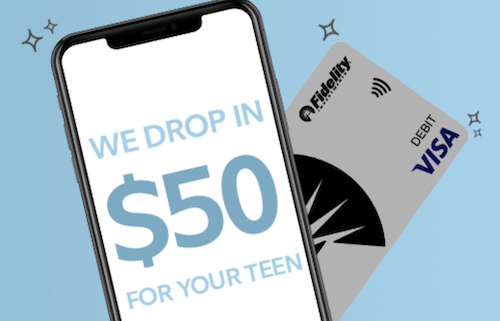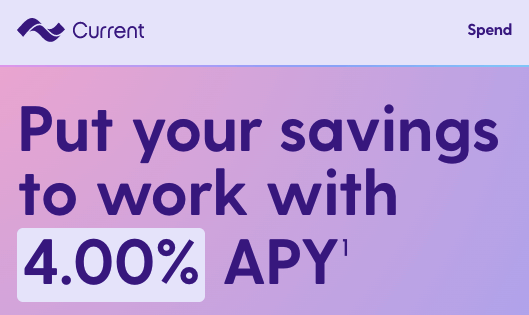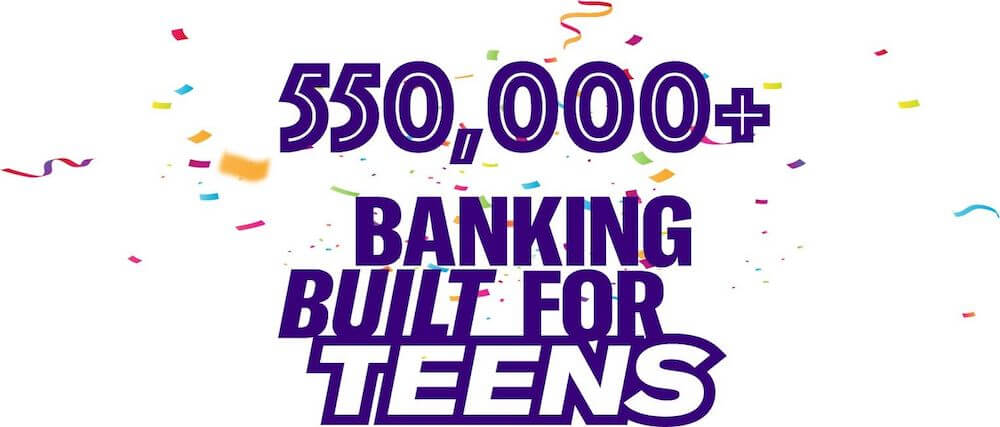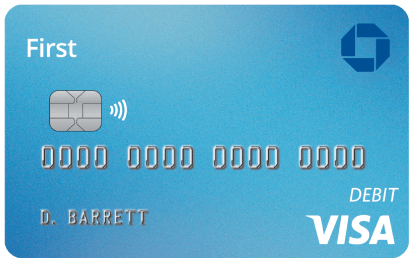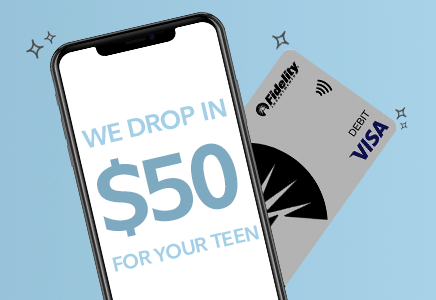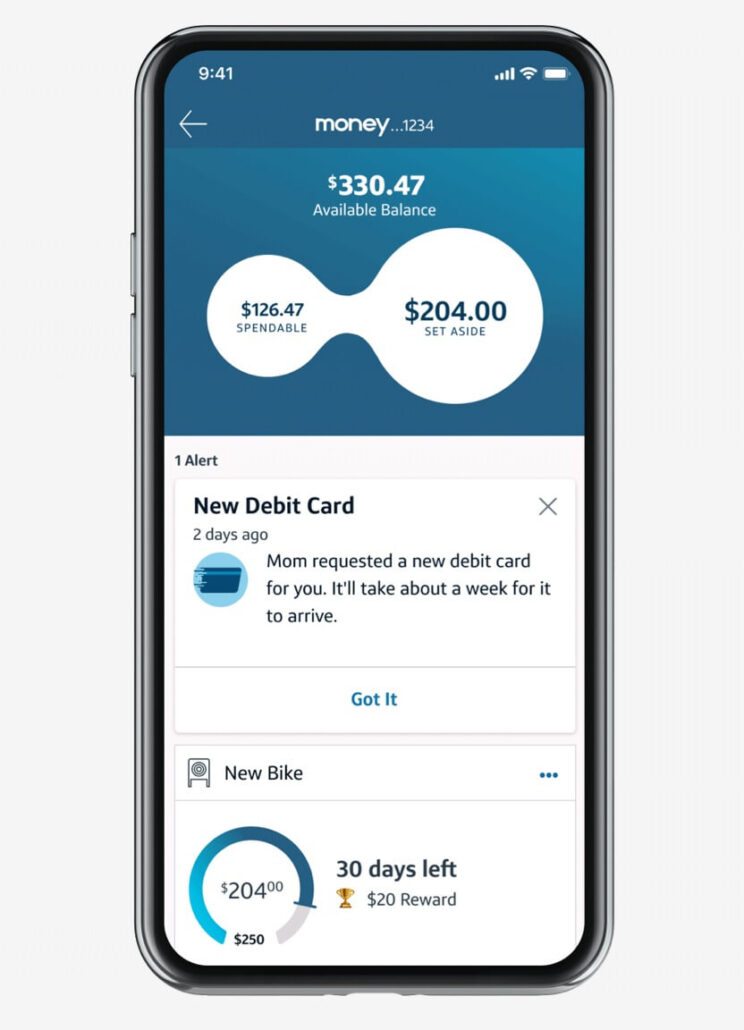
The Capital One MONEY Teen Checking Account may be a great solution to teaching your teenager to become financially independent. Named one of 2020’s best checking accounts by GOBanking Rates, this fee-free, interest-bearing checking account helps teens learn how to spend wisely and save money for long-term financial goals.
Hunting for the perfect checking account for your teen? In this article, we’ll cover everything from fees and disclosures to how this kids’ checking account by Capital One stacks up against the competition. You can also see where it sits in our rundown of the best debit cards for kids and teens this year.
Who is it For?
Average age: 13 to 17.
Good candidate: Tech-savvy teens with some experience managing their own money.
Kids eight years old and older are eligible to have this account, but it really is meant more for teens. The platform and practices are meant to mirror those of a standard checking account for adults, so this is best for older kids and teens who know their way around an app and have some degree of understanding about responsible money management.
Once a user turns 18, they can transfer their money to a 360 Checking Account. They may do this on their own without making their parent(s) a joint account owner. Alternatively, they can keep their MONEY account when they turn 18 and enjoy higher transaction limits.
A MONEY debit card by Capital One is issued in the teen account holder’s name and can be used anywhere Mastercard is accepted (with a few exceptions for safety reasons, outlined in “Is It Safe” section below.)
Noteworthy Features and Benefits
Fees: No monthly service fees or minimum monthly balance requirements; no ATM fees at over 70,000 in-network locations*; no fee for debit cards; no charge for incoming domestic or international wire transfers.
The Capital One MONEY Teen Checking Account puts teens in control but gives parents the final say. In other words, teens can have as much independence over their money and account as their parents deem appropriate.
This checking account currently earns an APY of 0.10%, compounded and credited monthly. This is a variable rate subject to change at any time. There is no minimum balance required to continue earning this interest rate and all interest accrued is automatically deposited into the account.
Parental Features and Benefits
When a parent and teen open a Capital One MONEY Teen Checking Account, they become joint account owners with the parent as the primary account holder. Parents can decide what permissions to set for their kids’ spending and can opt-in to receive alerts and push notifications about their activity.
With a MONEY checking account, parents are able to monitor their teens’ activity and intervene as they fit. This may mean locking their child’s card, setting withdrawal and purchase restrictions, or removing money from their account. A parent may decide to restrict their child’s spending at a certain retailer or location as well.
Parents can also encourage positive spending/saving behavior in their children by setting up automatic savings plans themselves and rewarding their children for reaching savings goals. They will be prompted with this choice, which they can either accept or decline and adjust as needed, through the app as soon as their child marks a goal as complete.
Parents and their kids have separate logins when using the app or online banking platform. Parents can see everything that their teens can see including account balances, savings goals, and spend activity from their screen and can make changes immediately from the app.
Parents can easily transfer money into their teen’s account from their own side of the MONEY account (more on how to fund this later). These can be one-time or recurring transfers for allowances and the like. Funding goes directly from a parent’s account of choice into their teen’s MONEY checking account. Unlike some kids’ debit products you’ll see, there is not a separate parent funding account from which money must be transferred.
Kids Features and Benefits
Teens with this account are encouraged to save with a competitive interest rate and optional, parent-activated account bonuses for reaching savings goals. They can set savings goals for themselves and divide their money into categories based on what is spendable and what is going to go into savings. Many financial literacy resources are available at no cost to users.
Teens can check their balance, see their transactions, set savings goals, and deposit money via direct deposit or check conveniently from the Capital One app. Besides having more alerts and the option of setting savings goals, the teen version of this app closely resembles many user-friendly checking account apps.
This is an online-only account and users never have to visit branches to manage their account if they don’t want to. This also means that the account is paperless and teens will receive electronic statements of their activity rather than paper statements and will not be given paper checks.
Teens can use their debit cards to make purchases at most retailers and online, and they can make withdrawals with their card for free at more than 70,000 AllPoint and Capital One ATMs.
Because parents and teens have their own accounts, teens can set their own username and password to access their account and PIN for using their debit card. This is a great way for teens to feel accountable and empowered with their accounts.
Overdrafting is not permitted with this debit card, so there is no fear of incurring fees for charging more than an account can handle.
*If this card is used at an out-of-network ATM, the account holder may be charged a third-party fee but will be reimbursed for withdrawals of this kind up to $15 per statement period.
Capital One MONEY Teen Checking Account Fees and Costs
Unless you request special services or extras, this really is a fee-free checking account. Other than a $25 expedited card delivery fee, a $5 statement fee for each paper statement you request, and a $10 fee for every Cashier’s check you purchase, this account does not cost anything to open, use, and keep.
Because this is a checking account and not a subscription-based product like Greenlight or FamZoo, there are no costs associated with keeping your account and accessing all of its features.
Capital One MONEY Teen Checking vs Competitors
One of the primary benefits of the Capital One MONEY Teen Checking Account over competitors—either checking accounts or prepaid cards—is that this account earns interest. Though it doesn’t offer the high-yields seen in the best checking and savings accounts on the market, this product is competitive compared to many other checking accounts and allows teens to learn about interest and how to maximize their earning potential.
Some other kids’ banking products do let users earn interest on savings, but in most cases, parents pay this interest and set the rates. In the case of this Capital One product, interest is paid by Capital One, a bank that tends to be fairly competitive with its rates.
Another benefit of this checking account is that it is pretty hands-off for the parents. You can choose to monitor your kids’ spending as much as you’d like, but you won’t be prompted to add more money if your child’s account balance gets low (because there’s no account minimum), approve their purchases, or otherwise micromanage their experiences.
Potential Drawbacks
There are few things not to like about this debit card and checking account, but some of the limitations could potentially be problematic. For example, all withdrawals and purchases are capped at $500 per day for users under the age of 18 years old. This includes ATM withdrawals as well. If for some reason your teen needs to charge an amount greater than this, you’ll run into problems and will need to contact Capital One for help.
Some people may also be disappointed by that 0.10% APY. It won’t be easy to find another checking account for teens with a higher interest rate, but this could still be a deal-breaker.
There is also no way to invest or donate with this particular checking account. This is something you’ll see offered by a lot of prepaid cards and debit cards marketed toward younger kids, but Capital One limits what users can do with their money with the MONEY checking account. It is more like a regular checking account in this respect.
Customer Sentiment
There is little in the way of customer reviews for the MONEY checking account online, but there is plenty of data on how people feel about banking with Capital One.
Reviews for Capital One are predominantly positive. This bank is known for offering great customer service and for being transparent with users about fees and restrictions. Overall, people that bank with Capital One are satisfied with the rates, support, and product they receive.
This is a huge, well-established bank with millions of users, so finding in-network ATMs and getting support is relatively easy for most.
To contact customer support, call 1-888-810-4013, tweet @AskCapitalOne, or reach out by mail at the following address:
Checking Accounts, Savings, Money Market and CD Accounts
Capital One Bank
P.O. Box 150
St Cloud, MN 56302-0150
There is no dedicated customer support line for MONEY Checking Account users, but you can send secure messages to an automated system at any time with non-urgent questions.
All MONEY checking account mobile banking is done through the Capital One app, which is one of the highest-rated banking apps available. It has 4.9 stars in the App Store and 4.6 stars on Google Play. You can also sign in to your account online to see your transactions and manage your account.
Is it Safe?
Like any other checking account with an accredited financial institution, this checking account is FDIC-insured up to the federally allowed limit of $250,000.
Capital One also prohibits the use of this card at establishments that are potentially unsafe to your child. These include:
- Places that serve/sell alcohol like bars, nightclubs, and liquor stores
- Massage parlors
- Retailers that sell prescription drugs
- Car rentals
As mentioned, parents can further restrict their kids’ spending by adding more establishments to this list of restricted retailers or by lowering their daily spend/withdrawal limit.
All charges made with a card that would lead to overdrafting are declined automatically. Both parents and teens will be notified if this happens.
How to Sign Up
Parents do not need to be Capital One customers to open a MONEY account for their teen. They can link nearly any deposit account except for money market accounts, savings accounts, and investment accounts.
Conveniently, everything can be done online when you sign up for a MONEY Teen Checking Account, but you can visit a Capital One branch in-person if you prefer. There is no minimum opening deposit requirement and the account can be funded in a number of ways. These include linking a Capital One or external checking account, making an ACH transfer via direct deposit, and funding with a card.
If you have multiple teens that you’d like to open accounts for, you will need to do so separately. This isn’t like some other kids’ debit card products, which give parents up to four or five debit cards per household and keep them all under one roof.
Final Thoughts
Just as Capital One has proven over the years to be a pretty solid bank and credit card issuer, the checking account for teens offered by this institution is tough to beat as well. This checking account stands out from its competitors because it pays interest, doesn’t charge any fees, and offers kids a safe, user-friendly banking account that’s as close to the “real thing” as you can get. It’s clear why personal finance experts recommend this checking account to parents for their teens.














